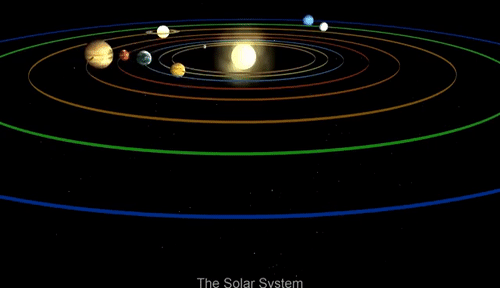zespaceblog:Planetary MigrationMercury, Venus, Earth, Mars, Jupiter, Saturn .. You probably know wha
zespaceblog:Planetary MigrationMercury, Venus, Earth, Mars, Jupiter, Saturn .. You probably know what comes next, but .. what if I said Neptune, Uranus ? The planets like the stars seem like clockwork, fixed in their specific orbits or places in our night sky, but have the planets in our solar system always been this way ? Planets migrate, and the larger planets migrate a lot more, and there’s a lot of different reasons for it. Other StarsThe stars in our sky are not fixed, most stars in our night sky are moving around the centre of the galaxy in a spur from one of the main arms, and while they generally follow a similar track, they do so at different speeds and different tracks. Some stars are heading in very different directions, Tau Ceti for example is heading at breakneck speed and is likely to leave the galactic plane before returning back in again. All this jostling around means stars come close and then move away. A star that moves particularly close will disrupt the orbits, either pushing planets inwards, or pulling them outwards. When stars are born, they are usually not alone, born in close knit clusters, and that closeness for many millions of years after the birth can drive a large amount of gravitational influence on the newly developing planetary bodies.Orphaned ExoplanetsIt is thought the galaxy is likely full of orphaned planets, kicked out of their system and left to wonder the galaxy without a host star, until that is, a star comes close enough to acquire it. Some believe the planet Uranus may have been such a planet, although it’s disputed. Additional planets would then disrupt all the other planets. ResonancePlanets when they orbit pull and tug on each other, the larger the planet, the more it can do this. Jupiter is key in our solar system. So much so, a book written in the 1970s called “The Jupiter effect” predicted all kinds of disasters are a result of planetary alignment. The truth is, we wouldn’t be here without it, Jupiter has helped stabilise the planets orbits using resonance. The moons of Jupiter are a good example of this, you can see how the moons orbit in a set pattern. This is because they have maximum impact on each other at their closest approach, and minimum at the furthest. A system such as this left to its own devices slowly conforms to a resonance pattern, and in doing so, it’s orbit becomes more stable held together by each in the system.Chaotic SystemsIn the early Solar System, just after the planets were born, the solar system was still full of gas and dust, and that leftover debris exerted it’s own gravitational pull and push, leading to planets moving about. One study from 2019 suggested Jupiter started out life 5 times further out and was pulled in by these bodies of gas, and over 700,000 years it finally found its location.Another theory is that Neptune was nearer Saturn, but migrated out further than Uranus. All in all, we don’t know for sure how our solar system looked when it was first created, we are only just beginning to understand some of the mechanisms involved, and the number of possible influences over the course of the last 4.5 billion years will never fully be known. What we can say for sure is, our Solar System wasn’t always like it is today, more so in the first 1 billion years of it’s life, and the heavy bombardment that occurred around that time is a mild hint to the chaos of those early days. -- source link
Tumblr Blog : zespaceblog.tumblr.com
